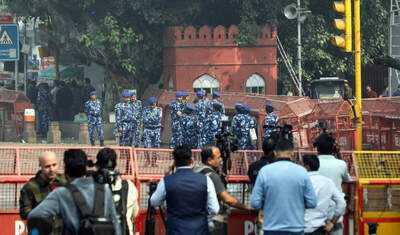
The investigation into the explosion near Delhi's Red Fort on November 10 has reached a significant juncture. According to preliminary findings from the forensic science laboratory, it has been confirmed that the vehicle contained a mixture of ammonium nitrate and TATP (triacetone triperoxide), both of which are considered highly potent and strictly regulated chemicals.
It is noteworthy that TATP has been utilized in numerous severe terrorist attacks globally, with even a small quantity capable of causing massive explosions.
The forensic team reported that the car was loaded with 30 to 40 kilograms of ammonium nitrate, indicating the severity of the potential explosion. Investigative agencies are also exploring connections between this blast and a module linked to the Faridabad-Pulwama area, where 358 kilograms of ammonium nitrate and other explosive materials were recently seized.
Ammonium nitrate is commonly used as fertilizer, but its sale is restricted to registered vendors. Licensed traders in Old Delhi's Tilak Bazaar have stated that such chemicals are not available in the open market. A senior member of a traders' association mentioned that the pool of legitimate buyers is very limited, primarily involving agricultural or authorized industrial activities.
Current investigations reveal that the suspects procured ammonium nitrate and fertilizers not from Delhi but from shops in Sohna, Gurugram, and Nuh in Haryana. Historically, ammonium nitrate has been extensively used in major terrorist attacks in India prior to 2012, and many IEDs are still based on this substance.
The purchase of ammonium nitrate is closely monitored; district magistrates can authorize up to 30 metric tons, while larger quantities require PESO approval. All legitimate transactions are tracked under the government's Explosive Tracking and Tracing System (SETT), yet the risk of illegal sales and purchases persists.
Experts suggest that when ammonium nitrate is combined with fuel oil, it transforms into a highly powerful explosive known as ANFO. This compound has been used in some of the world's most devastating terrorist attacks, including the 1995 Oklahoma City bombing. Despite its highly unstable nature, TATP has also been involved in several global attacks, including the 2015 incidents in France and the 'shoe bomber' case.
In response, the Delhi police are exercising heightened vigilance. According to Madhur Verma, Joint Commissioner of Police for the Central Range, measures are being implemented to prevent the unauthorized sale of chemicals. Meetings are being convened with licensed vendors and associations in Tilak Bazaar and other chemical trading areas in Old Delhi to discuss the identification of such chemicals, strengthening supply chain monitoring, and developing a rapid alert system for suspicious transactions.
The police are also planning to enhance documentation processes, stock audits, and coordination between vendors and agencies to preempt any potential misuse in the future. Investigative agencies are treating this case with utmost sensitivity and are exploring various angles.
Overall, the initial forensic report has pointed towards a potential terrorist conspiracy behind the blast, and security agencies are now focusing on every detail that could help uncover this entire network.